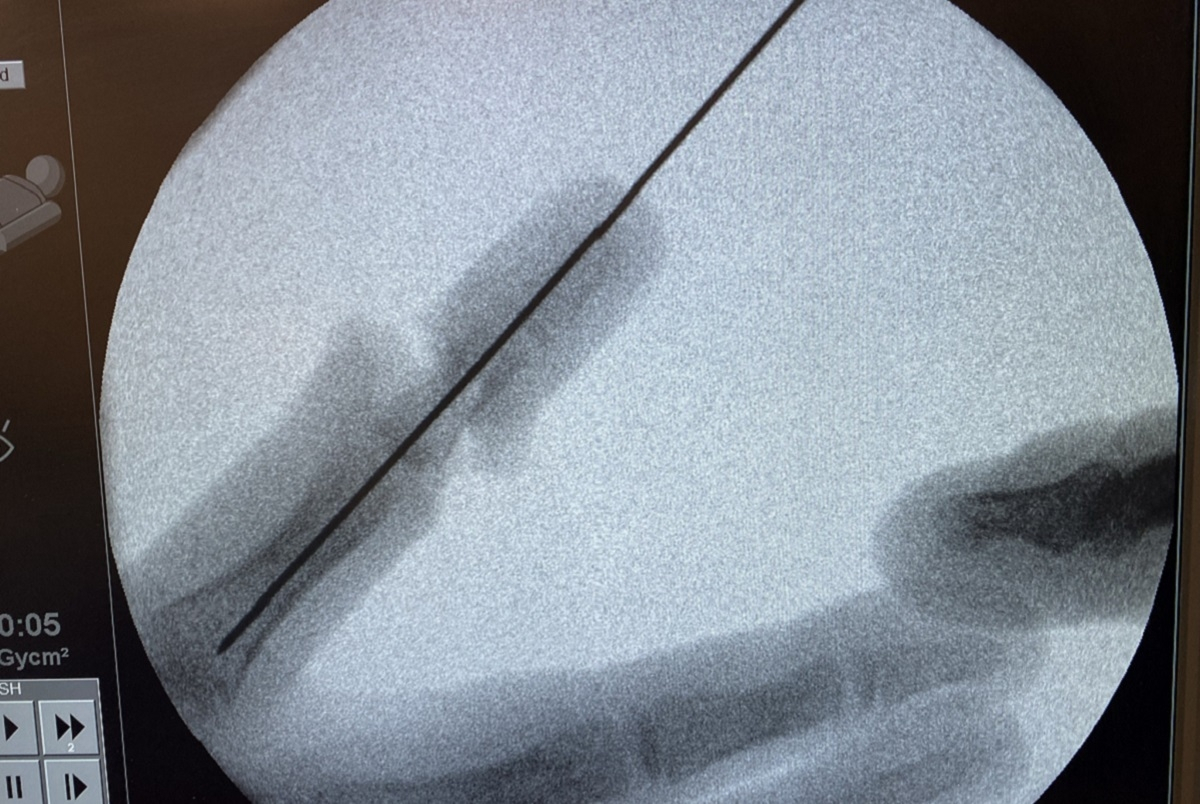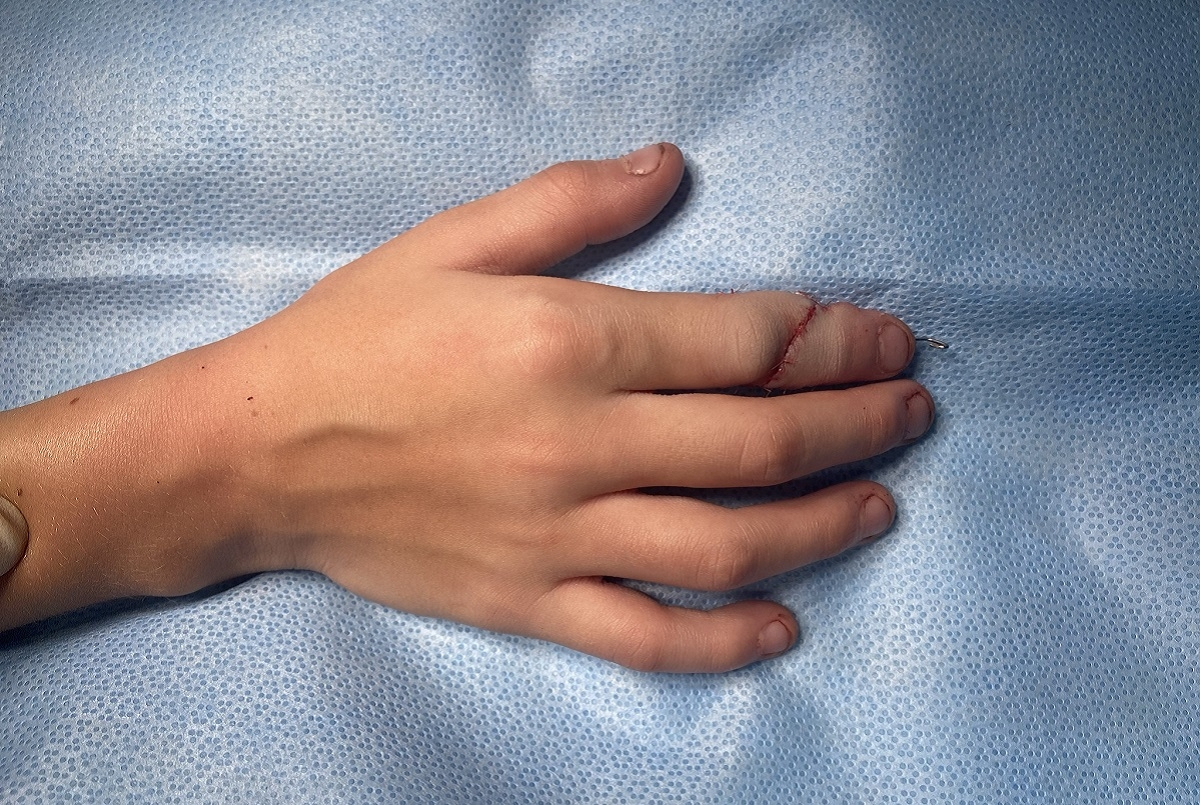Boy loses part of finger in accident – St Petersburg University Clinic operates

The University doctors have performed a complex digit replantation surgery on an eight-year-old boy. They reattached a fragment of an index finger that had been severed in an axe accident. The patient is feeling well and is already preparing to be discharged from hospital.
The emergency microsurgery was performed by surgeons from the Pirogov Clinic of High Medical Technologies at St Petersburg University with the participation of doctors from the Hand Surgery Centre at the SOGAZ International Medical Centre. The surgical team worked quickly. Within 18 minutes after the patient had been admitted to the hospital, surgical manipulations began with the severed piece of the finger, and within an hour – immediately after the necessary tests and procedures – the boy was already in the operating room.
Today, there are no more than ten microsurgeons who perform such complicated surgeries on children in Russia.
The surgery lasted five hours. During this time, the team of surgeons set and stabilised the bones with a pin, then sutured the flexor and extensor tendons of the finger, nerves, arteries and veins. ‘The diameter of the blood vessels to be joined is just 0.3 millimetres, and we placed four to ten sutures on each of them. For this meticulous work, we used an operating microscope, specialised instruments, tiny needles, and ultrafine sutures. These sutures are so thin that they are practically invisible to the naked eye,’ explained Vladimir Zavarukhin, Head of Traumatology Department No 3.

After the surgery, the boy spent five days in the intensive care unit for antithrombotic therapy, which is a required postoperative stage. Currently, the boy has been transferred to a regular ward and is soon to be discharged home. In total, he will have spent in hospital approximately ten days. We have been able to avoid complications, and we can already report the successful digit replantation. Now our patient will have to undergo a rehabilitation programme.
The key to the success of such interventions is efficient and well-coordinated work of the surgical team. My colleagues and I immediately started working with the severed fragment, while paediatricians from the St Petersburg University clinic were preparing the patient for the surgery.
Dr Andrei Zhigalo, Candidate of Science (Medicine), Head of the Hand Surgery Centre at the SOGAZ International Medical Centre
‘Thanks to the concerted efforts of the two teams, we were able to save time, avoid possible risks and successfully perform a complex surgery to reattach the amputated fragment and restore the full function of the boy’s hand,’ said Dr Zhigalo, Candidate of Science (Medicine), Head of the SOGAZ Hand Surgery Centre.

The University doctors remind: if such an injury occurs, first and foremost, you need to try to remain calm. Inside the fingers, there are no muscles which are affected earliest. A few-hour delay before the surgery will therefore not be critical. Next, you need to stop the bleeding using a pressure bandage: the less blood you have lost, the easier will be the postoperative recovery. After that, you have to call an ambulance. The severed body part should be preserved in a cool but not freezing environment. ‘The amputated fragment, if it is heavily soiled, must be rinsed off, wrapped in dry gauze and sealed in an airtight bag. This bag should be placed in another airtight bag filled with cold water. Now, this bag is to be placed into a container with ice. It is vital that the severed part should never come into direct contact with the ice, because it can make the piece unsuitable for replantation,’ stressed Dr Zavarukhin.
Scheduled reconstructive surgeries are carried out at the Pirogov Clinic at St Petersburg University continuously throughout the year. Often times these surgeries are unique, nationwide and even worldwide. The University surgeons operate on children with major hand and foot deformities, such as brachydactyly or split hand/ foot malformation. Children with these congenital defects are born with missing digits, fingers and/ or toes. To make the hands more functional and significantly improve the quality of life of the child, surgeons transfer the patient’s toes to replace the missing fingers. These are the most complicated surgeries that only a few specialists can perform in our country.

